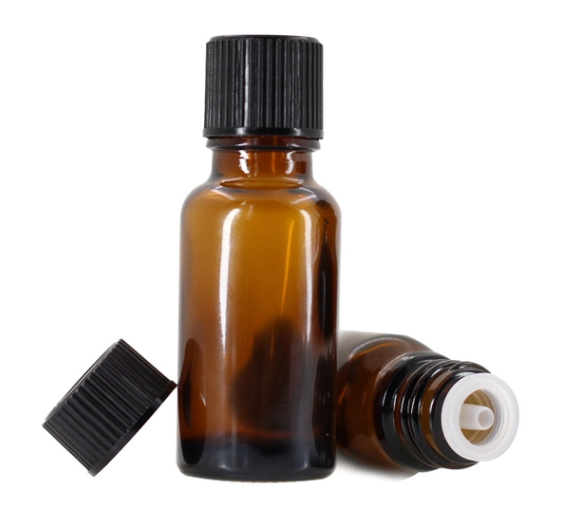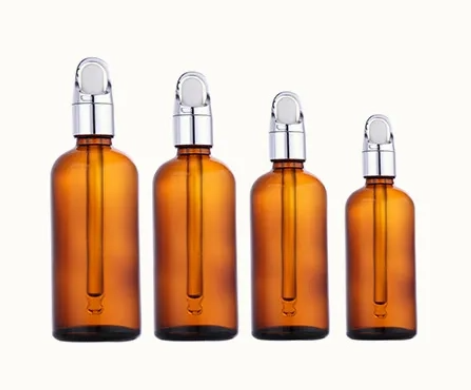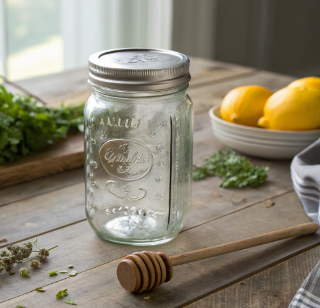Amber color oil refers to oil with a golden-brown hue, typical of certain fresh, high-quality lubricants and some cooking oils. This means the oil is fresh and hasn’t yet collected the grime of the road. It’s from the base oil and any additives.
For buyers and engineers, seeing the oil’s color aids in verifying its quality prior to usage. Then the post discusses what imparts oil’s amber color and what that implies.


The Essence of Amber Oil
Amber oil, a fossilized resin, is sought after for its comforting, complex scent and calming properties. It’s not plant-sourced, but created by mixing and warming resins such as benzoin and labdanum, along with vanilla and floral oils, to mimic the rich scent of genuine amber. This combination provides amber oil its distinctive balsamic, woody, and sweet aroma.
It’s creamy, not shrill or brash, but huddles near the skin and hums away in the distance, like frankincense or dragon’s blood. The quiet amber oil, the essence of refined taste not a statement.
Amber oil has enduring fixation strength. Its fragrance can remain for more than 10 hours on skin or clothes leaving a base note that holds perfumes and attars. This is why it’s the source of amber oil’s popularity with artisan perfumers and natural incense makers.
Its molecular composition – a thick matrix of terpenes and aromatic molecules – aids in sealing in the odor, so it erodes gradually. This architecture not only molds its fragrance, but facilitates its use in long-wear products.
Amber oil is valued for more than just fragrance. It’s used in perfumes, incense, personal care, aromatherapy and even spiritual rituals. Its soft fragrance is said to calm the spirit and to many, stimulate desire, inspiring its inclusion in decadent perfumes and body oils designed to soothe or seduce.
|
Industry |
Application |
|---|---|
|
Perfumery |
Base in attars, fixative in fine fragrances |
|
Personal Care |
Scent in body oils, lotions, creams |
|
Aromatherapy |
Stress relief, grounding, meditation |
|
Spiritual/Incense |
Ritual use, calming spaces, ceremonial burning |
|
Niche Artisans |
Ingredient in handmade oils and specialty blends |
Why Amber-Colored Bottles?
Amber glassbottlesdo have a point, in oil storage. They block UV light, which damages oils through photooxidation. This process alters the oil’s chemical composition, reducing its shelf life and diminishing its potency. Amber glass prevents UV light from 10 to 400 nanometers, which is invisible to the human eye yet still harms sensitive goods. That’s what makes amber bottles so popular for essential oils, cosmetics, beer, and even some medicines.
The benefits of amber glass bottles for storing essential oils include:
-
Stronger Protection: Amber glass keeps out harmful UV rays, so oils last longer and keep their key scents and effects.
-
Better Shelf Life: Less light gets through, which means less chance for oils to turn bad or lose their strength.
-
Chemical Safety: Amber glass does not react with oils or let chemicals in, so the product stays pure.
-
Toughness: These bottles are strong and take years to break down, unlike most plastics.
-
Recyclable: Amber glass is 100% recyclable, though it is best used to make more amber glass.
-
Wide Use: From skincare and CBD to beer and perfume, amberbottlesare trusted worldwide.
Amber bottles are just pretty. Their beautiful, deep color really makes them stand out on the shelf. This makes them a go-to for brands that desire a timeless, luxury aesthetic. The heritage of amber glass can be traced back to the late 1700s, when it began by aspiring to imitate the aesthetic of expensive French winebottles.
For optimal application, essential oils are best in dropper bottles and Boston rounds – such as 10ml, 30ml or 100ml. These shapes are simple to fill and pour, and they look great in labs and shops alike.


Applications in Wellness
Amber hue oil has a powerful presence in many wellness industries due to its robust, organic composition. In aromatherapy, it’s best known for helping to calm the mind and soothe stress. This sesquiterpene-rich oil works by reducing stress indicators like cortisol or increasing the secretion of positive hormones like oxytocin and dopamine.
Used in diffusers or warm baths, it can assist in establishing a tranquil environment, great for those with insomnia or just looking to escape the daily pressure. For massage, blending amber oil with a carrier eases tight muscles, so it’s a popular choice both in the spa and at home.
Amber oil shines in skin care with its calming and smoothing qualities. A lot of people apply it to soothe skin conditions such as rosacea or eczema, wherein the skin’s barrier is compromised and in need of enhanced hydration. Its antimicrobial properties, again associated to sesquiterpenes, defend skin from external damage.
Others apply amber oil to invigorate hair. By massaging it into the scalp, users say it encourages better blood circulation, which potentially nourishes hair follicles and stimulates new growth.
Amber oil is gaining in food and drink, though used in very minute quantities. Here are a few simple ways to add it:
-
Mix a drop with honey for tea
-
Add to baked goods for a woodsy scent
-
Blend with olive oil for salad dressings
-
Use in homemade chocolate for depth
-
Stir into cocktails for a hint of pine
Mixing amber oil with other fragrances can make it more complex. Test cardamom for warmth or sandalwood for a deeply earthy conclusion. Every mix shifts the vibe and can be aligned to the user’s desires or preference.


A Personal Perspective on Scent
Amber salted oil, dredging up deep emotions. As do most of us, when we detect how its warm, rich scent can evoke a location or a time. This occurs most likely because scent activates the brain’s memory center. A hint of amber, for instance, can recall the calm of a lazy night or beloved nook.
The way amber oil blends with each individual’s skin can make it personal — sometimes tender and silky, sometimes enigmatic and brazen. The samebottlesmells slightly different on everyone, and it’s all part of the magic. Some may perceive it amber and enduring, while others sense it changes and intensifies with each hour.
Experimenting with new blends is half the fun! By blending amber with other oils—vanilla, wood, spice—you can craft a fragrance that ‘smells like you’. What smells great on you might be all wrong for me. We often see others try blends before they find their perfect match.
Others feel a little insouciant, yet endure all day, great for those who incline toward a whisper. Others desire a more complex fragrance that evolves over time, flaunting additional facets as the day progresses.
There’s just something about scent that helps establish a certain mood in a room. The table below shows how different scents can change the feel of a room:
|
Ambiance Created |
Example Scent Notes |
Typical Use Cases |
|---|---|---|
|
Calm and relaxed |
Amber, lavender |
Offices, bedrooms |
|
Warm and welcoming |
Vanilla, amber |
Living rooms, lobbies |
|
Fresh and clean |
Citrus, green scents |
Bathrooms, kitchens |
Custom scent is hot. They love creating fragrances that fit their personality. This trend equals more choices and more opportunities to express your style with scent. No two individuals scent amber oil in an identical fashion, and that’s what makes it unique.
Verifying Authenticity
Amber color oil derives its worth from cleanliness and transparent origin. Solar supply chain buyers understand that only authentic and pure oil can satisfy the requirements of extended use or specialty affairs. Check if amber oil is genuine isn’t simply trust—it’s safety, quality and worth for each project.
-
Look for tactile indicators. Genuine amber oil is rich yellow to orange in color, silky in texture, and weighs according to its kind. Counterfeit ones can appear too translucent, watered down or emit weird odors. Color says a ton—just like honey has rigid color parameters, the right hue in amber oil is a major indicator.
-
Read the label. Eachbottlewill include transparent, complete details—origin, process, batch number, maker information. Anonymous labels or fuzzy language are red flags. In our business, tags are the initial trace of quality, similar to following the grade of steel in C channel brackets.
-
Stick to trusted names. Factories with ISO or CE marks, or those that ship worldwide, have more to lose by skimping. Reliable brands in oils, as in steel, support their claims with true inspections and lot documentation.
-
Test it. Kits for oils can detect counterfeit blends prior to utilization. These are our salt spray or thickness tests for galvanized steel. More labs today using spectrophotometry or even AI to verify the color and composition of the oil. Chromatography and spectroscopy will help identify mix-ins or counterfeit, but can be pricier and slower.
Personal checks and lab tools work best. If you’re not certain, compare to a known real sample. It’s slow and can be expensive, but safeguards your project and brand.


Proper Storage and Handling
Amber color oil, in common with all essential oils, requires proper storage and handling to maintain its freshness and potency. Proper storage and handling can alter the effectiveness and the durability. For B2B buyers — particularly in solar and manufacturing — taking the proper steps leads to less wasted effort, better outcomes, and lower risk.
For proper storage, always store amber color oil in a cool, dark place. Proper storage and handling – constant temperature is key – keep it between 2-4°C or, for most, 15-21°C. Sunlight and heat dissolve oil more quickly, so a shadowed cabinet or a closed drawer beats a sunny shelf by the window. Properly stored oils can maintain their potency and aroma for longer.
Preferably amber glassbottles. This opaque glass keeps out the light and prevents UV from ruining the oil. Plastic is a poor choice because potent oils can leach chemicals out of the plastic, altering the oil’s composition and safety. Bright glass keeps the oil pure.
Be sure to seal bottles tight after each use. Air allows in moisture and dirt that can ruin your oil. It accelerates oxidation, which causes the oil to smell funny or to change color. If you see any discoloration, or the oil feels cloudy or viscous, it probably isn’t safe anymore.
Store all oils out of the reach of children, particularly those under 7. Put them up where the kids can’t see or reach. This reduces the danger of leaks or inadvertent consumption.
For best handling, follow these steps:
-
Wash hands and work on a clean surface.
-
Do not dip tools or fingers in thebottle. Pour only what you require into a clean spoon or cup!
-
Dilute the oil as needed before use.
-
Wipe the top of the bottle clean and close up immediately.
-
Use blends within a few months for best results.
Conclusion
Amber color oil is famous for its rich tone and warm scent. A lot of people believe in it for mood and skin. Its rich, golden color speaks of attention in the making and a connection to the soil. Our choice of amber glassbottlesnot only keeps light out, but holds the oil’s strength. Folks reach for this oil for chill, for fragrance or just because – self-care! Proving the oil’s realness holds strong for prime application. Keep it fresh, store it cool and dry, out of sun. Every drop tells a tale, from craft to shelf. For complete oil specs or styling advice, contact. Interested in the details or to view full test reports? Demand the specifics.
Frequently Asked Questions
What gives amber oil its distinctive color?
Because of the resins and plant extracts, amber color oil has a beautiful, golden-brown hue. These compounds absorb light differently, making the signature amber color.
Why are amber-colored bottles often used for oils?
Amber bottles shield oils from the sun and UV rays. This aids in protecting oil quality, shelf life, and protects it from degradation.
Is amber color oil natural or synthetic?
Amber color oil of course can be natural or synthetic. True amber oil is derived from resins or botanicals, but other items employ synthetic coloring for dramatics. Always, always, always check the label for authenticity.
How is amber oil used in wellness practices?
Amber oil is an aromatherapy and massage favorite. It is recognized for its soothing fragrance and possible anti-stress properties. Dilute prior to application on the skin.
How can I check if my amber oil is authentic?
Look for trusted vendors, transparent ingredients, and third-party screening. Natural amber oil will smell natural and be the color of amber, not have a stinky perfume scent or be dyed.
What is the best way to store amber-colored oil?
Keep amber oil cool and dark, ideally in its original amberbottle. Storing it correctly shields the oil from heat and light exposure, helping maintain a fresh life span.
Does the scent of amber oil fade over time?
Yes, the aroma will dissipate if exposed to air or light or heat. Be sure to close the bottle tightly and keep it out of the sun to maintain the aroma.










